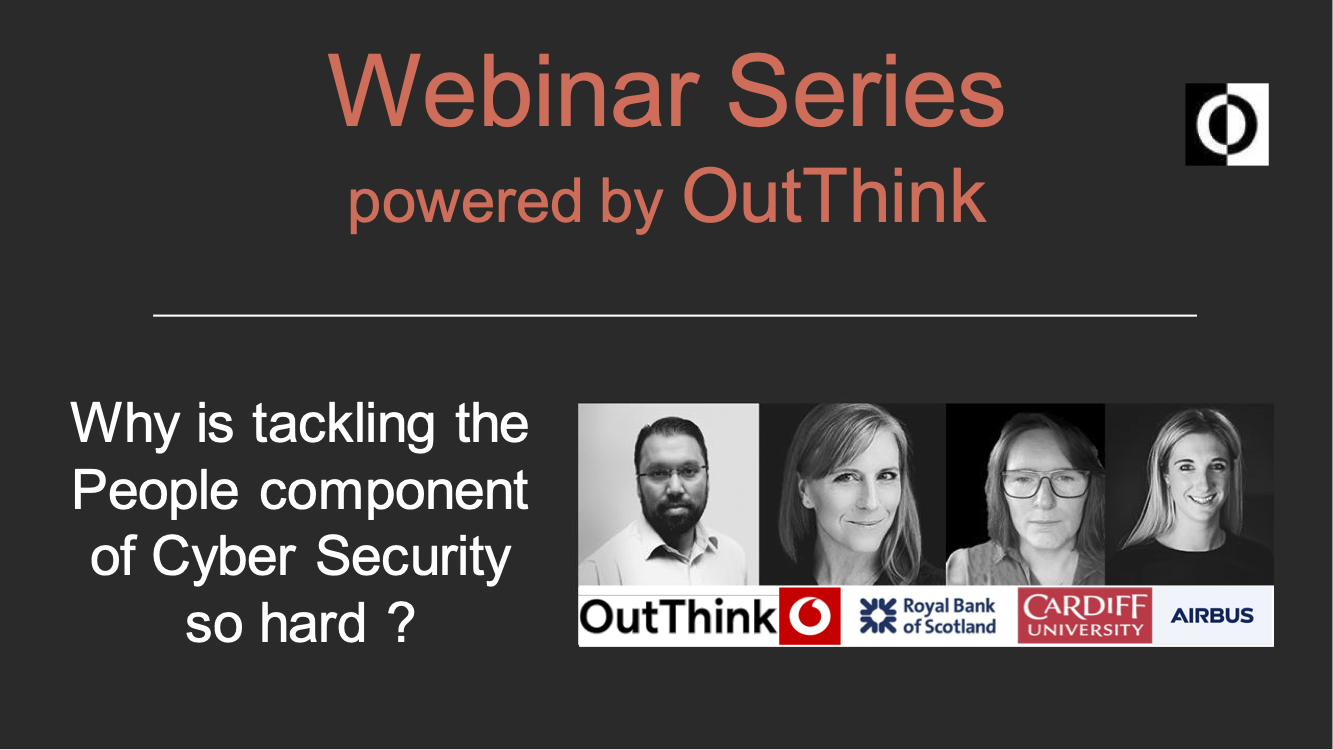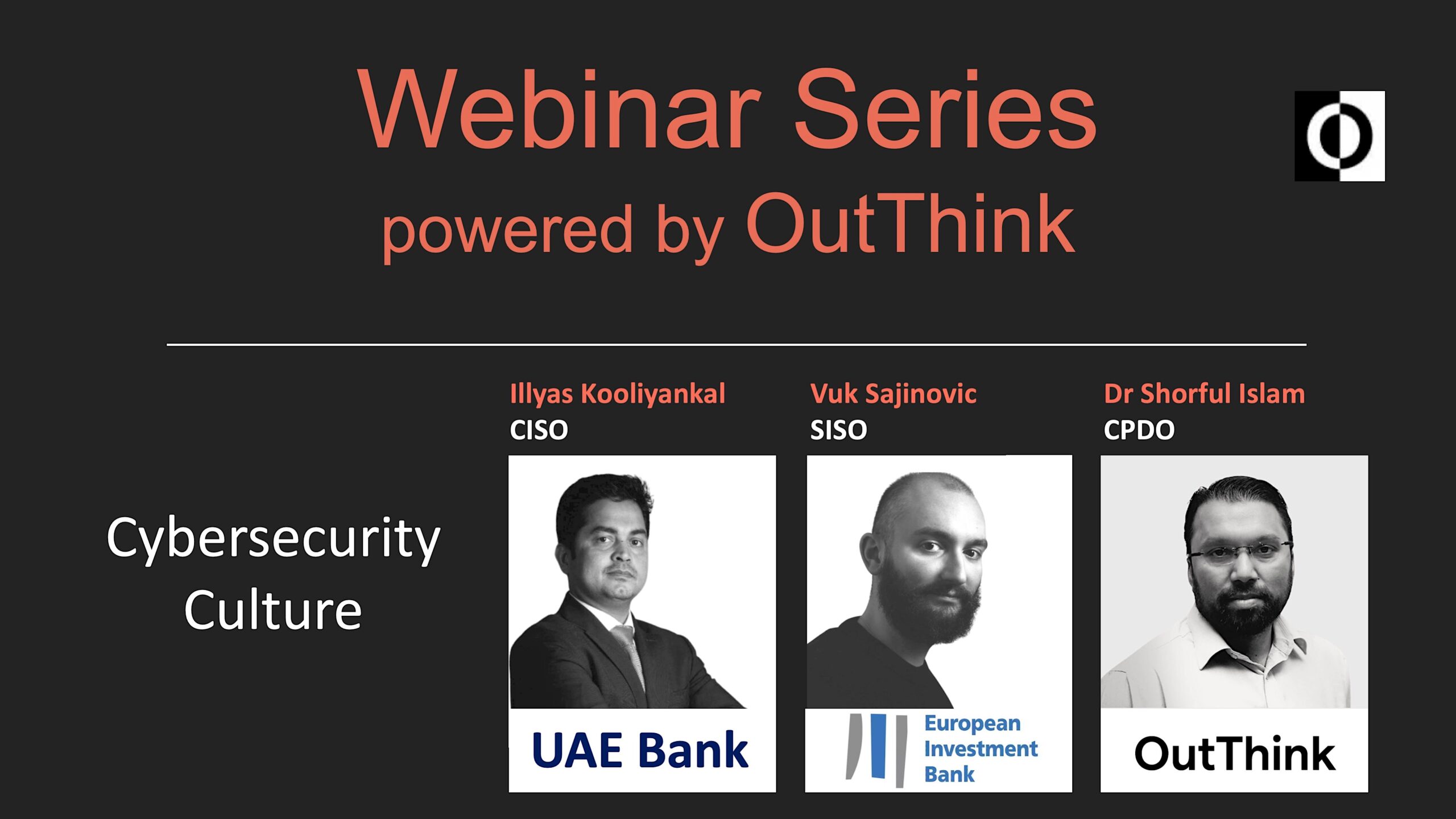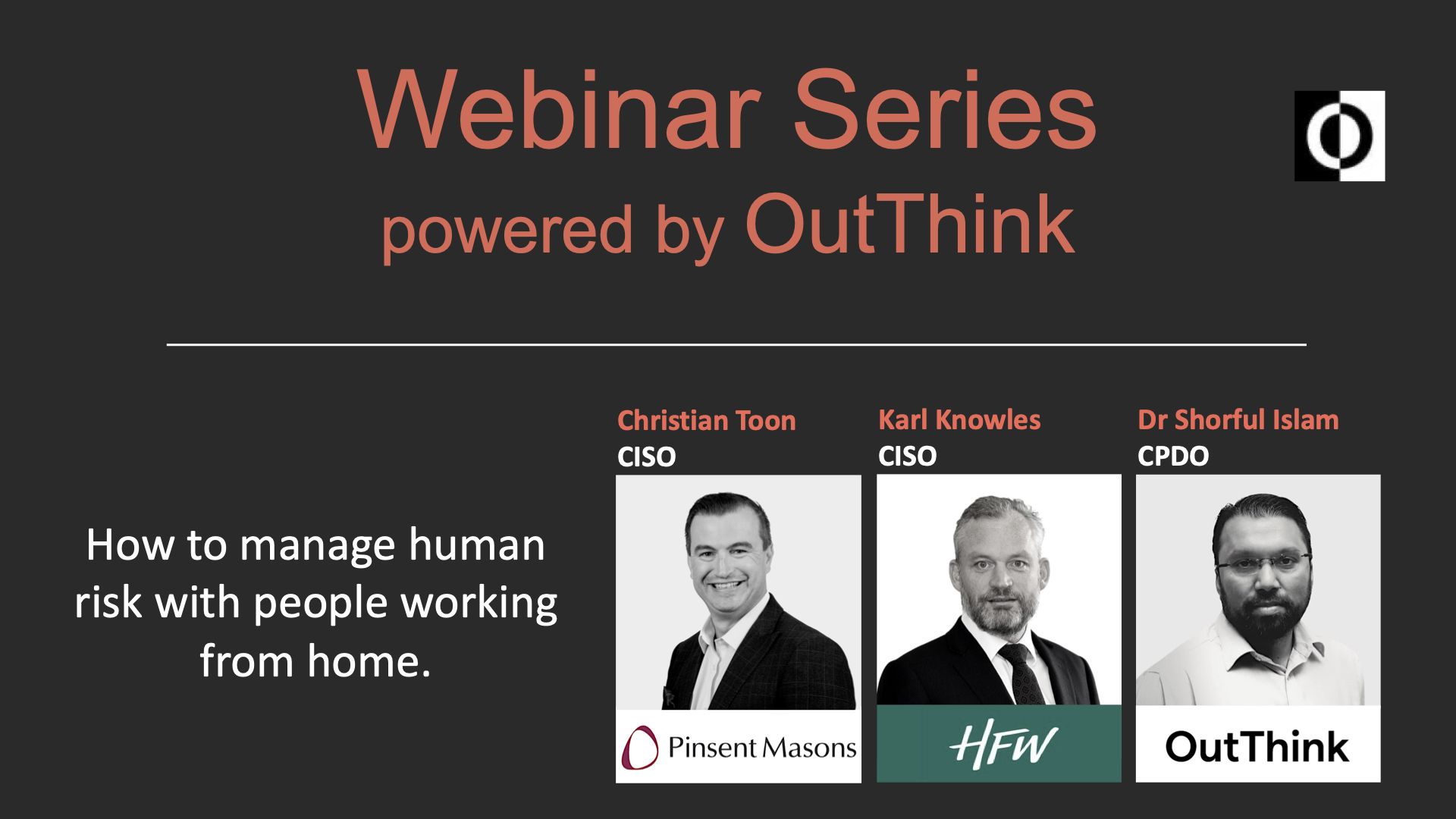With all the money and resources put into training awareness videos and phishing campaigns, security breaches due to human factors still remain high (90.5%) ICO, 2019. To address this, OutThink is engaged in building a Framework for the Management of Human Risk in Cyber Security. As part of this work, we hosted our latest webinar on June 11th, 2020. In this webinar we discussed: why tackling the human element of cyber security is so hard.
The panelists involved in the conversation were:
Dr Phoebe M Asquith, Senior Research Associate in Cyber Psychology and Human Factors at Airbus and Cardiff University. She has an MA in Psychology, an MSc in Cognitive Neuroscience and a PhD. As part of her doctorate she developed novel neural network mapping techniques using fRMI, MEG and machine learning. Her interest in Cyber Psychology is rooted in understanding the relationship between security communication, awareness and behaviour, and the disconnect between the three.
Imogen Verret, Senior Security Awareness Manager for Vodafone Group. Prior to Vodafone, Imogen served for 17 years in the British Army. Specialising in security and intelligence. She has a broad background ranging from tactical analysis, training and development, information operations and strategic intelligence. Academic background in Zoology and Developmental Behavioural Modelling (DBM).
Ceri Jones, Cyber Security expert with 10 years of experience. She has been championing research in the area of Sociotechnical Security and using her expertise to bring research into practice across government projects. Having recently moved from the central government, she now looks to bring that experience into the private sector.
The webinar was hosted by Shorful Islam, Chief Product & Data Officer at OutThink.
Request to Watch Webinar
"*" indicates required fields






